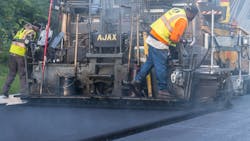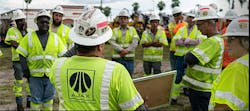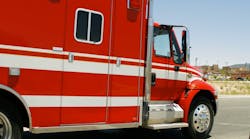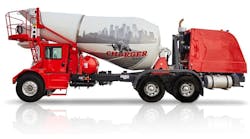“It’s a dirty job, but somebody’s got to do it” isn’t funny anymore. Not only are contractors facing labor shortages, but workers are also demanding safer conditions and continuous training to ensure that they will go home in one piece at the end of the day.
Asphalt paving job sites can become slow-moving accident sites, putting them in the top five most dangerous construction work zones for struck-by and fall incidents.
Research on construction worker safety associated with construction equipment has mostly focused on accident type rather than injury severity using data from the Occupational Safety and Health Administration. Additionally, accidents involving on-foot workers and equipment operators are investigated collectively, as well as separately.
A 2018 study, “Worker safety and injury severity analysis of earthmoving equipment accidents,” found these human variables were significantly associated with injury severity and produced the highest odds for fatal accidents:
- Inadequate safety training
- Missing equipment protective system
- Being a nonunion worker
- Being an equipment operator
- Being on or around inadequately maintained equipment
Struck-by accidents were the most prevalent and most fatal. Non-OSHA-compliant safety training, missing seatbelts and operators not using seatbelts, malfunctioning back-up alarms, and poorly maintained equipment were factors contributing to accidents and fatalities. On-foot workers experienced a higher number of accidents than operators, while fatality odds were higher for the operators. Read how onboard cameras can help equipment operators see workers, reducing struck-by accidents.
Even during the pandemic when there were fewer construction workers on the job, there was a 4.2% increase in the fatal injury rate from 2019 to 2020. Construction laborers and helpers endured 43.3% of the recorded deaths. Falls and struck-by deaths, especially on road and highway construction projects, ranked second only to structures and surface accident (roofing, scaffolding, confined spaces) fatalities. Unfortunately, less experienced and less skilled labor helpers are the most vulnerable.
A key component of worker safety is frequent and consistent training says Mandy Kustra, safety director for Ajax Paving Ind. Of Florida.
“Keep your people educated. They want to learn,” Kustra says. “Companies need to take advantage of the training that manufacturers such as Cat or Sakai offer for your pieces of equipment. We bring operators in for smaller classes, maybe 10 people or less, so they can just focus on the roller that they operate.”
Ajax Paving has a 15-member safety committee with representation from every level of the company: Laborers, operators, foremen, and management regularly review safe work practices, work zone safety, incidents, PPE, and safety policies to ensure a safe working environment.
Kustra suggests making use of weather-induced downtime to offer safety classes.
“Take advantage of the training that manufacturers and dealers offer,” she says. “[Employees]…frequently thank us for bringing in equipment dealers and manufacturers because they cover topics that we didn’t consider.”






